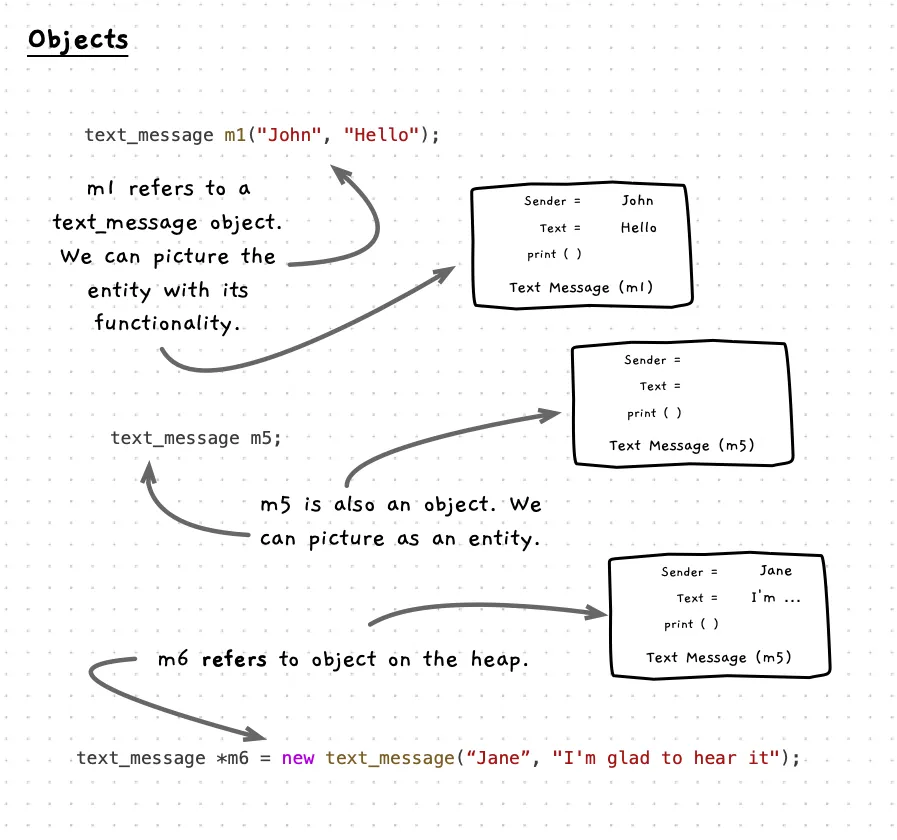Objects
Once we start working with member functions, we are moving into object-oriented programming. So…
What are objects?
The values we create from a struct with member functions are known as objects.

Example
The following code creates seven text_message objects. The variables m1 to m5 are each an object on the stack, which in C++ you interact with using the dot operator (.). The m6 variable is a pointer that can point to a text_message object. We initially create one message object, and interact with it, before deleting it. We can then reuse that pointer and create a new text_message object for it to refer to.
#include "splashkit.h"
struct text_message{ string text; ///< The content of the message. string sender; ///< The sender of the message.
text_message(string sender, string text) { this->sender = sender; this->text = text; }
text_message() { sender = ""; text = ""; }
void print() { write_line("Message from " + sender + ": " + text); }};
/** * @brief Entry point for the message program. Demonstrates usage of the * text_message struct. */int main(){ // Create a text_message object - m1 - on the stack. It has name "John" and text "Hello" text_message m1("John", "Hello");
// Create a text_message object - m2 - on the stack. It has name "Mary" and text "Hi" text_message m2("Mary", "Hi");
// m3, m4, and m5 are also text_message objects text_message m3("John", "How are you?"); text_message m4("Mary", "I'm good thanks"); text_message m5;
// You can interact with the objects... m1.print(); // ask m1 to print itself m2.print(); // ask m2 to print itself m3.print(); m4.print(); m5.print();
// Objects can also be on the heap... in this case m6 is a pointer to the object. // the object itself is on the heap text_message *m6 = new text_message("John", "I'm glad to hear it");
// With pointer, use the -> operator to interact with the object m6->print(); // ask the object that m6 points to, to print itself delete m6; // now destroy the object that m6 refers to...
// The object referred to by m6 no longer exists... but m6 = NULL; // m6 still exists - it is a pointer. We can change it to point to null now.
// We can even create another object for m6 to refer to m6 = new text_message("Ye", "Howdy"); delete m6;
return 0;}